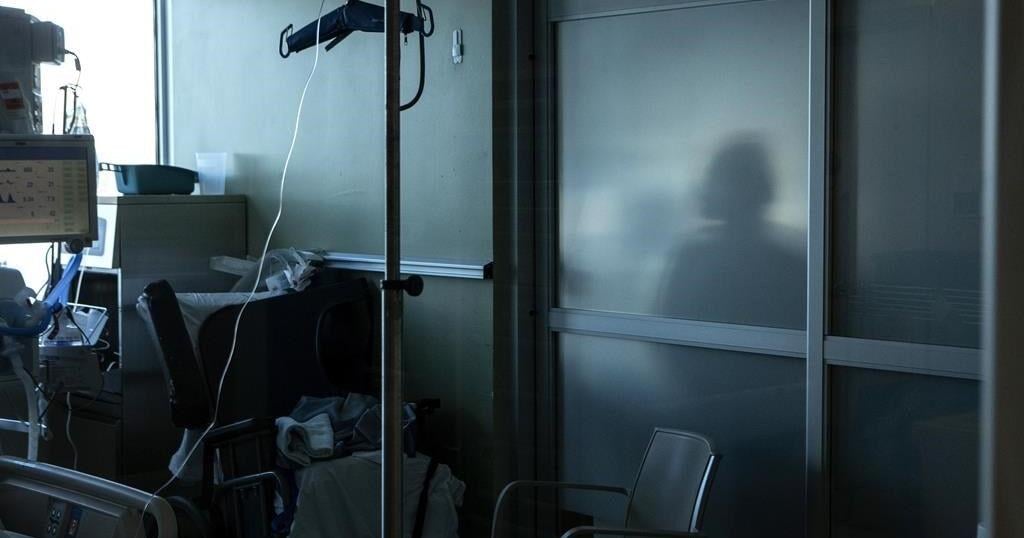Health
What to know about prescription drugs promising weight loss

Obesity is a major and growing problem around the world, but especially in the U.S., where more than 40% of adults and about 20% of children now meet the criteria for what doctors say has become an intractable chronic disease.
Rates of the disease have soared in recent decades, spurred by the complex interaction of genes that make people more likely to store food as fat, a food system that provides easy and cheap access to processed treats explicitly designed to be overconsumed, and social settings that limit access to healthy options and exercise for many people.
Obesity is linked to scores of health problems that can lead to disability or even death, including high blood pressure, diabetes, heart disease, stroke, cancer and joint problems.
Researchers have long looked for medications that can help people lose weight, mostly with disappointing and, in some cases, dangerous results. In recent years, however, drugs designed to help people with type 2 diabetes control their blood sugar levels have had the added effect of paring pounds.
People are also reading…
Ozempic, a Novo Nordisk drug approved to treat diabetes in 2017, skyrocketed in use after celebrities and ordinary people on TikTok reported that their doctors prescribed it “off label” for weight loss. Wegovy, a higher dose version of the same medication, called semaglutide, was approved for weight loss for adults in 2021 and for children aged 12 and older late last year.
Now, a new drug made by Eli Lilly and Co., called tirzepatide, is poised to become the most potent obesity drug on the market, promising users losses of more than 30 to 50 pounds over time. Already approved under the brand name Mounjaro to treat type 2 diabetes, tirzepatide is being considered for fast-track approval as a weight-loss drug based on the results of key trials, with the latest announced on Thursday.
The new study found that patients with diabetes — who find it notoriously difficult to lose weight — could shed about 16% of their body weight, or more than 34 pounds using tirzepatide. An earlier study found that people without diabetes lost up to 22% of their body weight, or more than 50 pounds on the highest dose of the drug.
Tirzepatide and other medications spur weight loss by targeting the metabolic conditions that lead to extra pounds. Here’s what to know about these new prescription drugs that promise weight loss.
What are these new weight loss drugs?
The drugs that have drawn the most attention have been a class of medications that activate a hormone known as GLP-1. They include Ozempic and Wegovy, which are two versions of the same medication, semaglutide.
Tirzepatide targets GLP-1, but also affects a second hormone, called GIP, which developers say contributes to its increased effectiveness. Mounjaro was approved to treat diabetes in May 2022.
The drugs are delivered through once-weekly injections. Users are advised to follow a healthful, reduced-calorie diet and to exercise regularly while using the drugs.
How do Ozempic, Wegovy and Mounjaro work?
The drugs work by mimicking the actions of hormones, found primarily in the gut, that kick in after people eat. The hormones help regulate blood sugar by triggering the pancreas to release insulin, another hormone, and slowing the release of sugar from the liver. People who are overweight or have obesity can become insulin-resistant, which means the body doesn’t respond to insulin properly.
The obesity drugs lower blood sugar and slow down digestion, so people feel full longer. They also affect signals in the brain linked to feelings of fullness and satisfaction, tamping down appetite, food-related thoughts and cravings.
Because people feel full longer, they eat less and lose weight.
How effective are the drugs?
In a trial, adults who took Wegovy saw a weight loss of nearly 35 pounds, or about 15% of their body weight. Adolescents lost about 16% of their body weight.
The latest study of tirzepatide studied the drug in more than 900 patients with diabetes who were overweight or had obesity over nearly 17 months. It showed weight loss of up to 16% of body weight, more than 34 pounds, when using the highest dose of the drug. Patients who received placebo, or dummy injections, lost about 3% of their body weight, or 7 pounds.
An earlier trial of tirzepatide showed weight loss of between about 15% and about 22% of body weight, or about 35 pounds to about 52 pounds, depending on the dose.
The drugs appear effective for chronic weight management over many months. In addition to weight loss, they also reduce health problems associated with obesity, such as high blood sugar and markers of heart and metabolic disease.
However, it appears that if people taking the drugs stop, they regain the weight they lost — and the health problems that came with it.
Why not just diet and exercise?
In a typical weight-loss program where participants rely only on diet and exercise, research shows only about a third of people will lose 5% or more of their body weight, said Dr. Louis Aronne, director of the Comprehensive Weight Control Center at Weill Cornell Medicine.
Many people find it difficult to lose weight because of the body’s biological reactions to eating less, he said. There are several hormones that respond to reduced calorie intake by ramping up hunger to maintain body mass.
What are the side effects of the drugs?
The most common side effects are short-lived gastrointestinal issues such as nausea, vomiting, constipation, diarrhea and stomach pain. Other possible effects include serious issues such as inflammation of the pancreas, kidney, gallbladder and eye problems. People with a history of certain thyroid cancers or a rare, genetic endocrine disorder should avoid the drugs, because it is not clear if tirzepatide causes thyroid problems, including cancer.
How much do these drugs cost?
The new anti-obesity medications are expensive. Wegovy costs about $1,300 a month and Mounjaro starts at about $1,000 a month. People with private insurance may be able to receive the drugs with only a small co-payment. However, many insurers don’t pay for the medications or they have restrictions regarding coverage. Medicare doesn’t cover most weight-loss drugs. Medicaid and the military insurer Tricare may cover them in some cases with prior approval.
#lee-rev-content margin:0 -5px;
#lee-rev-content h3
font-family: inherit!important;
font-weight: 700!important;
border-left: 8px solid var(–lee-blox-link-color);
text-indent: 7px;
font-size: 24px!important;
line-height: 24px;
#lee-rev-content .rc-provider
font-family: inherit!important;
#lee-rev-content h4
line-height: 24px!important;
font-family: “serif-ds”,Times,”Times New Roman”,serif!important;
margin-top: 10px!important;
@media (max-width: 991px)
#lee-rev-content h3
font-size: 18px!important;
line-height: 18px;
#pu-email-form-health-email-article
clear: both;
background-color: #fff;
color: #222;
background-position: bottom;
background-repeat: no-repeat;
padding: 15px 0 20px;
margin-bottom: 40px;
border-top: 4px solid rgba(0,0,0,.8);
border-bottom: 1px solid rgba(0,0,0,.2);
display: none;
#pu-email-form-health-email-article,
#pu-email-form-health-email-article p
font-family: -apple-system, BlinkMacSystemFont, “Segoe UI”, Helvetica, Arial, sans-serif, “Apple Color Emoji”, “Segoe UI Emoji”, “Segoe UI Symbol”;
#pu-email-form-health-email-article h2
font-size: 24px;
margin: 15px 0 5px 0;
font-family: “serif-ds”, Times, “Times New Roman”, serif;
#pu-email-form-health-email-article .lead
margin-bottom: 5px;
#pu-email-form-health-email-article .email-desc
font-size: 16px;
line-height: 20px;
margin-bottom: 5px;
opacity: 0.7;
#pu-email-form-health-email-article form
padding: 10px 30px 5px 30px;
#pu-email-form-health-email-article .disclaimer
opacity: 0.5;
margin-bottom: 0;
line-height: 100%;
#pu-email-form-health-email-article .disclaimer a
color: #222;
text-decoration: underline;
#pu-email-form-health-email-article .email-hammer
border-bottom: 3px solid #222;
opacity: .5;
display: inline-block;
padding: 0 10px 5px 10px;
margin-bottom: -5px;
font-size: 16px;
@media (max-width: 991px)
#pu-email-form-health-email-article form
padding: 10px 0 5px 0;
.grecaptcha-badge visibility: hidden;

Continue Reading
Health
Whooping cough is at a decade-high level in US

MILWAUKEE (AP) — Whooping cough is at its highest level in a decade for this time of year, U.S. health officials reported Thursday.
There have been 18,506 cases of whooping cough reported so far, the Centers for Disease Control and Prevention said. That’s the most at this point in the year since 2014, when cases topped 21,800.
The increase is not unexpected — whooping cough peaks every three to five years, health experts said. And the numbers indicate a return to levels before the coronavirus pandemic, when whooping cough and other contagious illnesses plummeted.
Still, the tally has some state health officials concerned, including those in Wisconsin, where there have been about 1,000 cases so far this year, compared to a total of 51 last year.
Nationwide, CDC has reported that kindergarten vaccination rates dipped last year and vaccine exemptions are at an all-time high. Thursday, it released state figures, showing that about 86% of kindergartners in Wisconsin got the whooping cough vaccine, compared to more than 92% nationally.
Whooping cough, also called pertussis, usually starts out like a cold, with a runny nose and other common symptoms, before turning into a prolonged cough. It is treated with antibiotics. Whooping cough used to be very common until a vaccine was introduced in the 1950s, which is now part of routine childhood vaccinations. It is in a shot along with tetanus and diphtheria vaccines. The combo shot is recommended for adults every 10 years.
“They used to call it the 100-day cough because it literally lasts for 100 days,” said Joyce Knestrick, a family nurse practitioner in Wheeling, West Virginia.
Whooping cough is usually seen mostly in infants and young children, who can develop serious complications. That’s why the vaccine is recommended during pregnancy, to pass along protection to the newborn, and for those who spend a lot of time with infants.
But public health workers say outbreaks this year are hitting older kids and teens. In Pennsylvania, most outbreaks have been in middle school, high school and college settings, an official said. Nearly all the cases in Douglas County, Nebraska, are schoolkids and teens, said Justin Frederick, deputy director of the health department.
That includes his own teenage daughter.
“It’s a horrible disease. She still wakes up — after being treated with her antibiotics — in a panic because she’s coughing so much she can’t breathe,” he said.
It’s important to get tested and treated with antibiotics early, said Dr. Kris Bryant, who specializes in pediatric infectious diseases at Norton Children’s in Louisville, Kentucky. People exposed to the bacteria can also take antibiotics to stop the spread.
“Pertussis is worth preventing,” Bryant said. “The good news is that we have safe and effective vaccines.”
___
AP data journalist Kasturi Pananjady contributed to this report.
___
The Associated Press Health and Science Department receives support from the Robert Wood Johnson Foundation. The AP is solely responsible for all content.
The Canadian Press. All rights reserved.
Health
Scientists show how sperm and egg come together like a key in a lock

How a sperm and egg fuse together has long been a mystery.
New research by scientists in Austria provides tantalizing clues, showing fertilization works like a lock and key across the animal kingdom, from fish to people.
“We discovered this mechanism that’s really fundamental across all vertebrates as far as we can tell,” said co-author Andrea Pauli at the Research Institute of Molecular Pathology in Vienna.
The team found that three proteins on the sperm join to form a sort of key that unlocks the egg, allowing the sperm to attach. Their findings, drawn from studies in zebrafish, mice, and human cells, show how this process has persisted over millions of years of evolution. Results were published Thursday in the journal Cell.
Scientists had previously known about two proteins, one on the surface of the sperm and another on the egg’s membrane. Working with international collaborators, Pauli’s lab used Google DeepMind’s artificial intelligence tool AlphaFold — whose developers were awarded a Nobel Prize earlier this month — to help them identify a new protein that allows the first molecular connection between sperm and egg. They also demonstrated how it functions in living things.
It wasn’t previously known how the proteins “worked together as a team in order to allow sperm and egg to recognize each other,” Pauli said.
Scientists still don’t know how the sperm actually gets inside the egg after it attaches and hope to delve into that next.
Eventually, Pauli said, such work could help other scientists understand infertility better or develop new birth control methods.
The work provides targets for the development of male contraceptives in particular, said David Greenstein, a genetics and cell biology expert at the University of Minnesota who was not involved in the study.
The latest study “also underscores the importance of this year’s Nobel Prize in chemistry,” he said in an email.
___
The Associated Press Health and Science Department receives support from the Howard Hughes Medical Institute’s Science and Educational Media Group. The AP is solely responsible for all content.
The Canadian Press. All rights reserved.
Health
Older patients, non-English speakers more likely to be harmed in hospital: report

Patients who are older, don’t speak English, and don’t have a high school education are more likely to experience harm during a hospital stay in Canada, according to new research.
The Canadian Institute for Health Information measured preventableharmful events from 2023 to 2024, such as bed sores and medication errors,experienced by patients who received acute care in hospital.
The research published Thursday shows patients who don’t speak English or French are 30 per cent more likely to experience harm. Patients without a high school education are 20 per cent more likely to endure harm compared to those with higher education levels.
The report also found that patients 85 and older are five times more likely to experience harm during a hospital stay compared to those under 20.
“The goal of this report is to get folks thinking about equity as being a key dimension of the patient safety effort within a hospital,” says Dana Riley, an author of the report and a program lead on CIHI’s population health team.
When a health-care provider and a patient don’t speak the same language, that can result in the administration of a wrong test or procedure, research shows. Similarly, Riley says a lower level of education is associated with a lower level of health literacy, which can result in increased vulnerability to communication errors.
“It’s fairly costly to the patient and it’s costly to the system,” says Riley, noting the average hospital stay for a patient who experiences harm is four times more expensive than the cost of a hospital stay without a harmful event – $42,558 compared to $9,072.
“I think there are a variety of different reasons why we might start to think about patient safety, think about equity, as key interconnected dimensions of health-care quality,” says Riley.
The analysis doesn’t include data on racialized patients because Riley says pan-Canadian data was not available for their research. Data from Quebec and some mental health patients was also excluded due to differences in data collection.
Efforts to reduce patient injuries at one Ontario hospital network appears to have resulted in less harm. Patient falls at Mackenzie Health causing injury are down 40 per cent, pressure injuries have decreased 51 per cent, and central line-associated bloodstream infections, such as IV therapy, have been reduced 34 per cent.
The hospital created a “zero harm” plan in 2019 to reduce errors after a hospital survey revealed low safety scores. They integrated principles used in aviation and nuclear industries, which prioritize safety in complex high-risk environments.
“The premise is first driven by a cultural shift where people feel comfortable actually calling out these events,” says Mackenzie Health President and Chief Executive Officer Altaf Stationwala.
They introduced harm reduction training and daily meetings to discuss risks in the hospital. Mackenzie partnered with virtual interpreters that speak 240 languages and understand medical jargon. Geriatric care nurses serve the nearly 70 per cent of patients over the age of 75, and staff are encouraged to communicate as frequently as possible, and in plain language, says Stationwala.
“What we do in health care is we take control away from patients and families, and what we know is we need to empower patients and families and that ultimately results in better health care.”
This report by The Canadian Press was first published Oct. 17, 2024.
Canadian Press health coverage receives support through a partnership with the Canadian Medical Association. CP is solely responsible for this content.
The Canadian Press. All rights reserved.
-

 Sports19 hours ago
Sports19 hours agoIn The Rings: Curling Canada still looking for Canadian Curling Trials title sponsor
-

 Politics19 hours ago
Politics19 hours agoN.B. election debate: Tory leader forced to defend record on gender policy, housing
-

 News19 hours ago
News19 hours agoAfter hurricane, with no running water, residents organize to meet a basic need
-

 News19 hours ago
News19 hours agoAlberta government shifts continuing care from Health to Seniors Ministry
-

 News19 hours ago
News19 hours agoBuhai, Green and Shin lead in South Korea after 8-under 64s in first round
-

 News19 hours ago
News19 hours agoManitoba government halts school building plan, says other methods will be found
-

 Sports19 hours ago
Sports19 hours agoMaple Leafs winger Bobby McMann finding game after opening-night scratch
-

 News19 hours ago
News19 hours ago‘Significant overreach’: Ontario municipalities slam province over bike lane rules





















